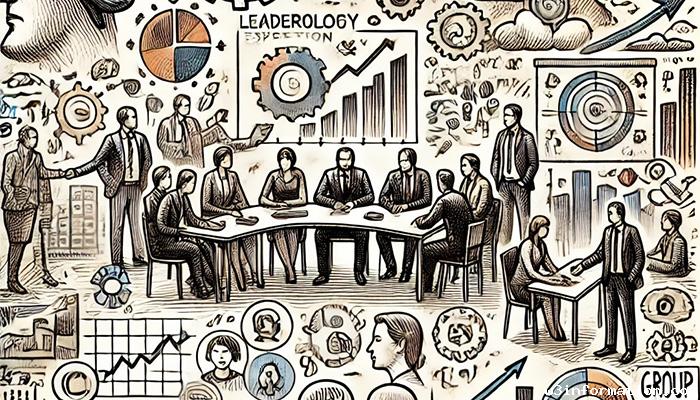The Psychology of Group Behavior and Leadership
Human beings are inherently social creatures. Both family units and corporate teams demonstrate the essential nature of groups in influencing human behavior, decision-making processes, and personal identities. Learning about group behavior psychology and leadership principles provides deep understanding of how people work together and influence each other to reach shared objectives. This article examines fundamental elements of how groups function together and examines successful leadership techniques.
The Nature of Group Behavior
The behavior of groups emerges from the combination of personal actions, shared norms within the group, and external environmental conditions. People form a distinctive collective dynamic when they unite which frequently goes beyond what drives them individually. Here are some key elements:
Social Identity: People experience belonging and identity through group membership. According to Social Identity Theory people establish their identity through the groups they belong to which affects how they think and act.
Group Cohesion: The effectiveness of groups depends on how connected their members feel to each other. Strong cohesion creates trust and cooperation but inadequate cohesion results in conflicts and inefficiencies.
Conformity and Peer Pressure: Members of groups tend to follow existing norms to ensure the group remains harmonious. Asch’s conformity experiments demonstrate how peer pressure can significantly shape individual actions.
Decision-Making: Groups benefit from multiple viewpoints when solving problems yet face challenges like groupthink which causes consensus to replace critical evaluation.

The Role of Leadership
Successful group dynamics depend fundamentally on effective leadership. Leadership involves guiding teams while simultaneously shaping their morale, cohesion and overall performance. Key psychological principles of leadership include:
- Leadership Styles: Different situations call for different approaches
- Transformational Leadership: Leadership inspires team members to pursue goals through a combination of visionary guidance and personal demonstration.
- Transactional Leadership: Focuses on structured tasks, rewards, and penalties.
- Servant Leadership: This leadership approach focuses on supporting team members' growth and health.
- Emotional Intelligence: Leaders possessing advanced emotional intelligence excel at managing interpersonal relationships which creates a supportive and efficient workplace environment.
- Situational Leadership: The model indicates that effective leaders modify their leadership approach to meet the demands of their team and the specific task by blending directive and supportive actions.
- Conflict Resolution: Leaders need to mediate disputes while sustaining team unity so that all conflicts are managed constructively without causing disruption.
Psychological Phenomena in Group Settings - Social Loafing: People typically work harder when they are alone compared to when they participate in group activities. Leaders who want to minimize social loafing must define job responsibilities and enforce accountability measures.
- Deindividuation: When people form part of large groups they often lose their personal identity which leads them to behave differently than they would by themselves. Mob behavior and online group interactions regularly demonstrate this phenomenon.
- Collective Intelligence: Certain groups demonstrate a level of collective intelligence that exceeds what individual members could achieve alone. Diverse membership combined with active participation and effective communication strengthens this phenomenon.
- Influence of Hierarchies: The structure of power relationships within groups influences both interpersonal interactions and eventual results. Leaders need to monitor the perception and exercise of their authority to maintain effectiveness.
Building Effective Groups and Leaders
To foster effective group behavior and leadership:
Establish Clear Goals: Establish a collective mission to synchronize group efforts and guide their progress.
Promote Open Communication: Develop trust through transparent actions and listen actively to promote collaborative relationships.
Encourage Diversity: Teams with diverse members generate a range of viewpoints which leads to improved creative solutions and problem-solving abilities.
Invest in Leadership Development: Offer training programs that strengthen decision-making abilities along with emotional intelligence and adaptability skills.
Create Inclusive Environments: Make sure every group member feels appreciated and enabled to offer their input.
Conclusion
The psychology of leadership and group behavior explains how individual members and teams function together to develop and accomplish their goals. Leaders who understand essential principles and apply them properly can establish environments that support individual and collective success. The ability to navigate collaboration dynamics is absolutely essential in our world that demands stronger teamwork.
 Top 10 Comfort Foods to Try This Winter
Top 10 Comfort Foods to Try This Winter
 Top 10 Christmas Destinations Around the World
Top 10 Christmas Destinations Around the World
 Navigating Adolescence: Tips for Parents and Teens
Navigating Adolescence: Tips for Parents and Teens
 How to Start a DIY Craft Project on a Budget
How to Start a DIY Craft Project on a Budget
 How to Build Strong Family Bonds in the Digital Age
How to Build Strong Family Bonds in the Digital Age
 The Importance of Early Childhood Education
The Importance of Early Childhood Education